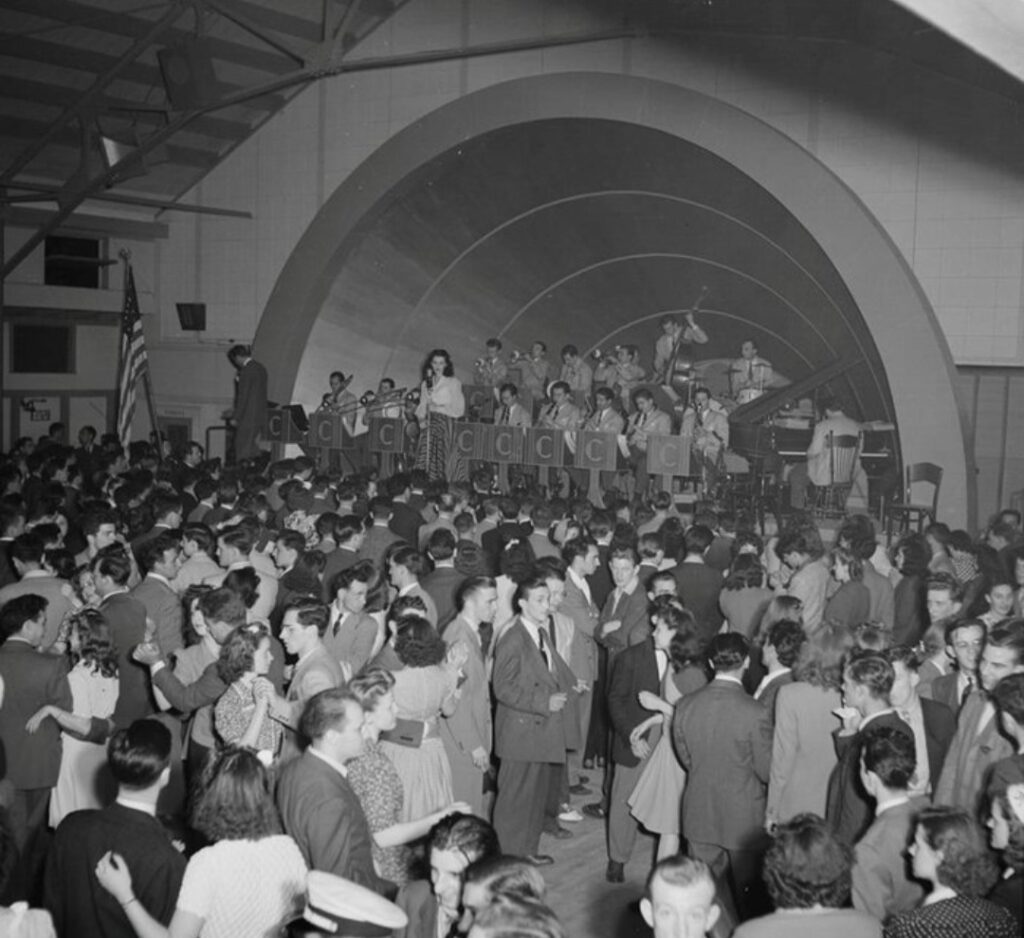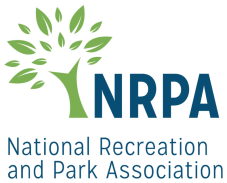As the demand for wellness experiences continues to rise, floating wellness retreats are emerging as the next evolution in relaxation, fitness, and holistic health. These floating sanctuaries offer guests a chance to disconnect from the stresses of everyday life while immersing themselves in the tranquility of open water. Whether designed for yoga, meditation, spa treatments, or fitness retreats, floating wellness centers provide a unique and rejuvenating experience that combines luxury, nature, and sustainability.

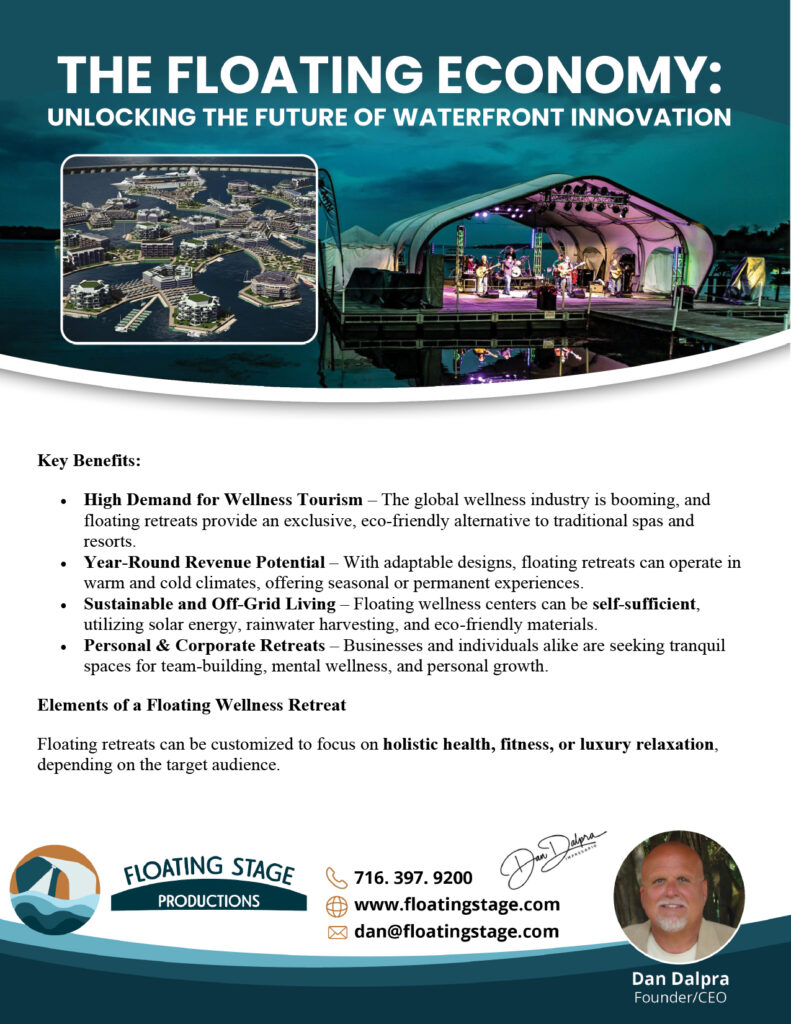
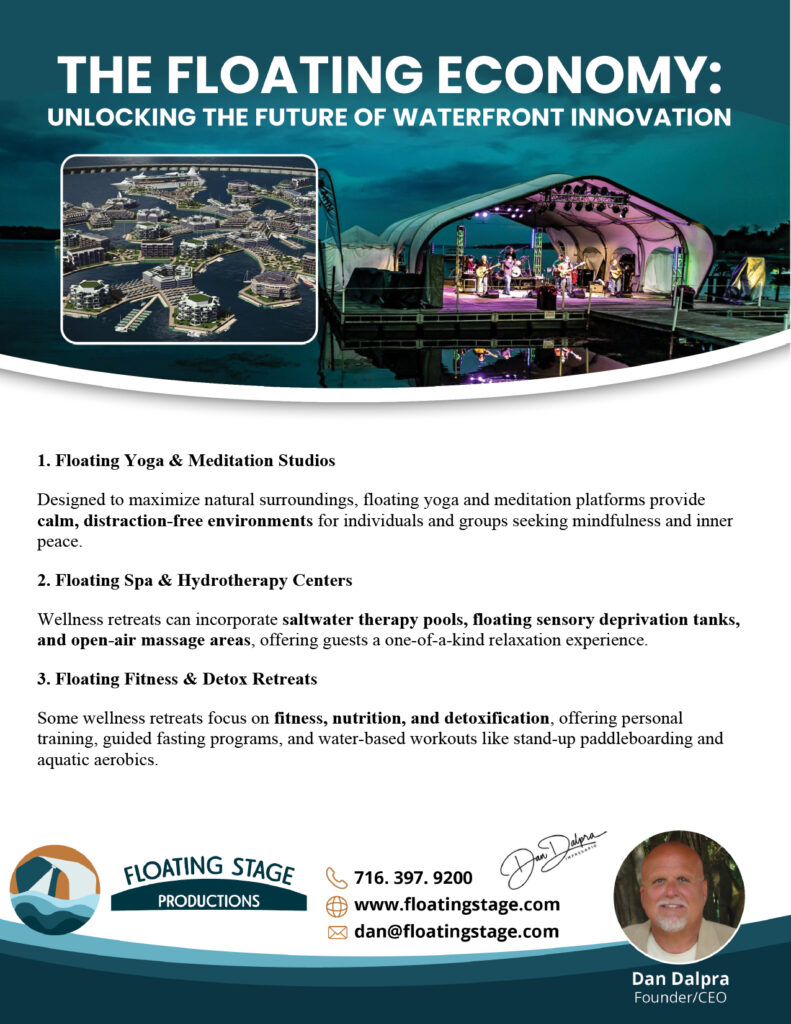
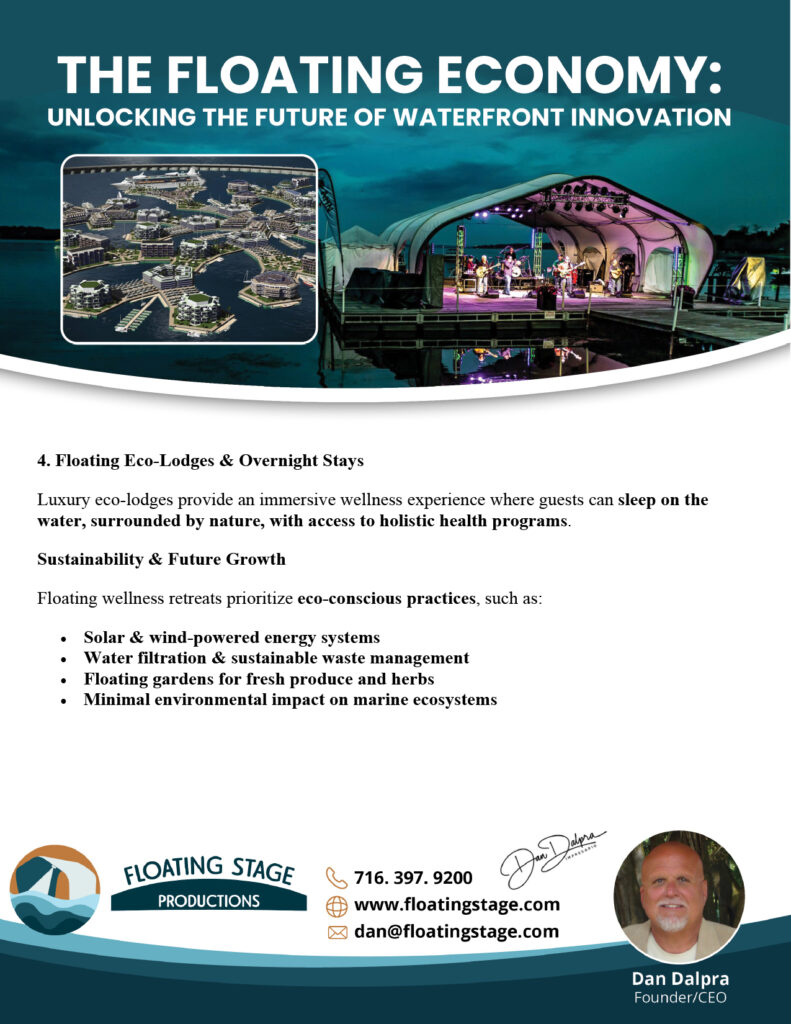
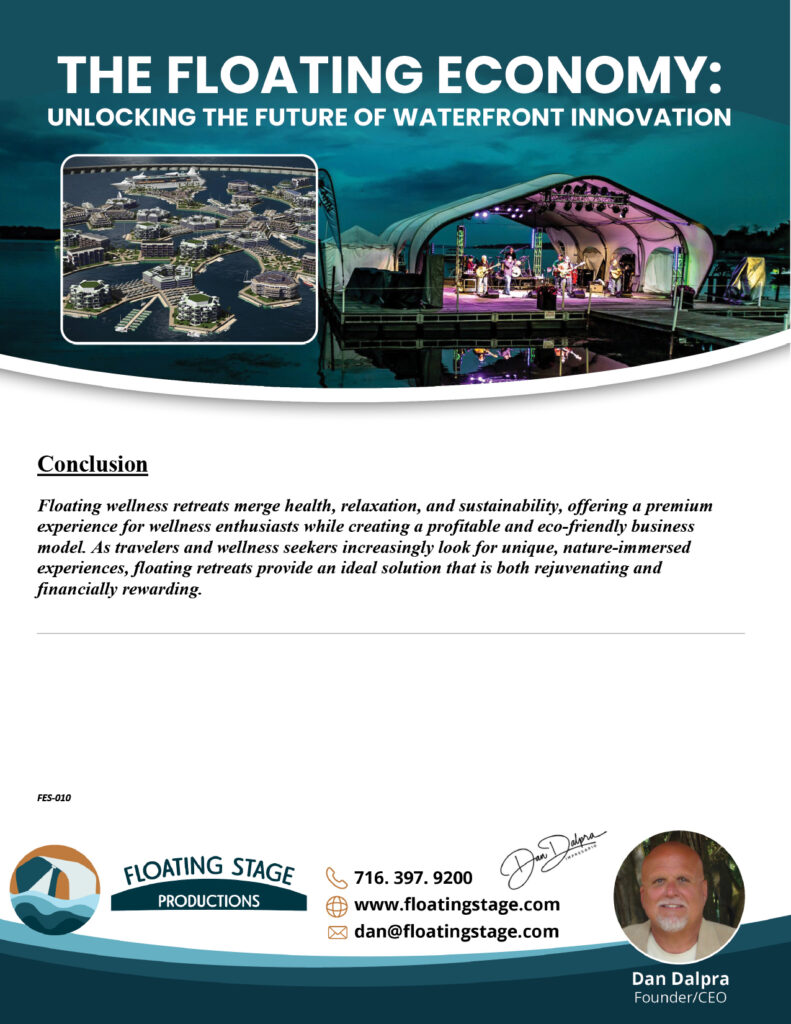
For homeowners and business owners along waterfronts, space is a premium commodity. Traditional shorelines often limit expansion possibilities, but floating infrastructure offers an innovative solution to create additional living, recreational, and commercial spaces. Whether it’s a private floating guesthouse, a business lounge, a man cave, or a floating event space, floating platforms allow property owners to maximize their waterfront potential.

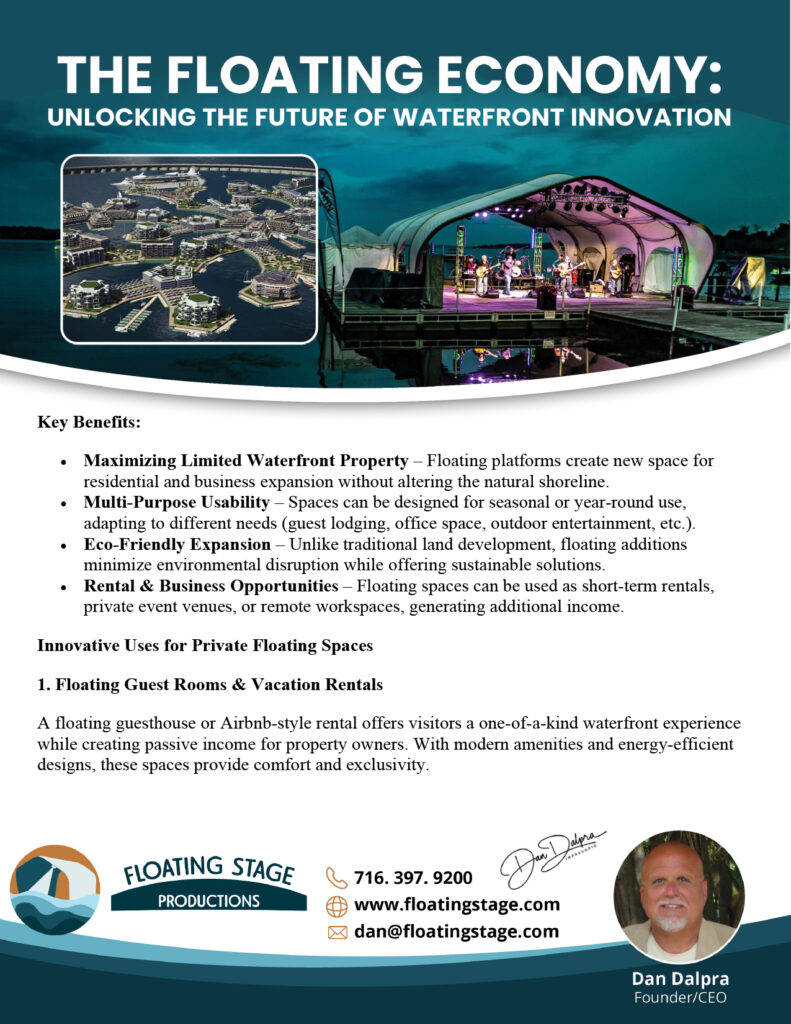
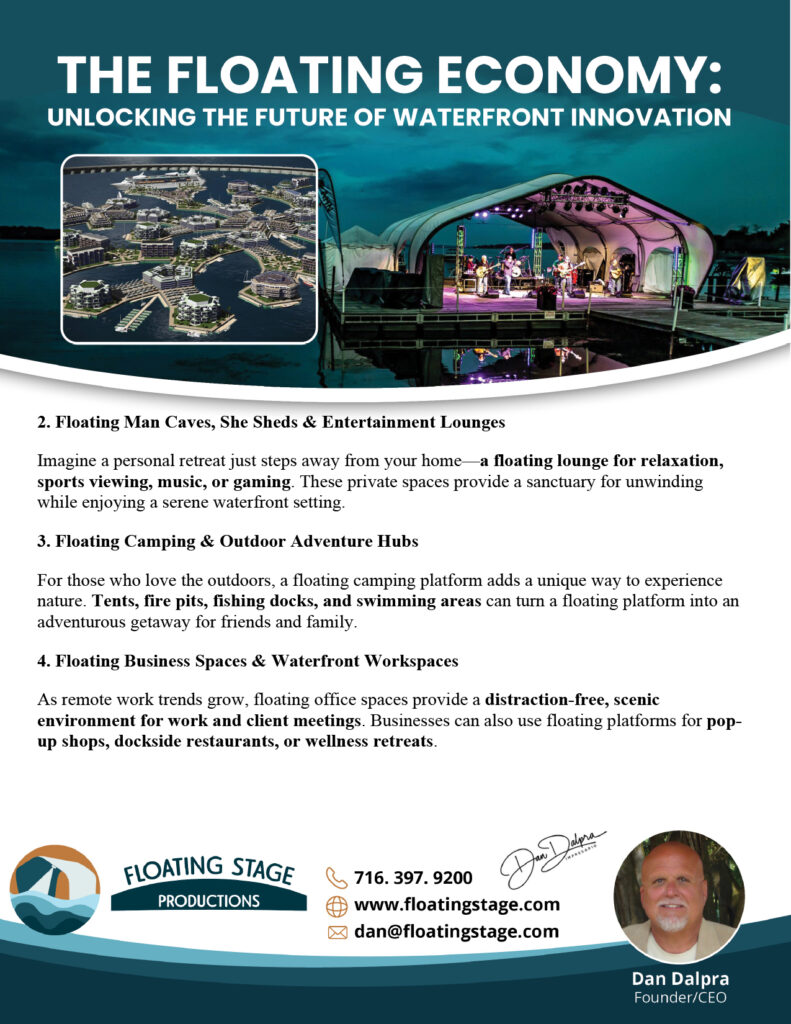

As urban populations grow and waterfront real estate becomes increasingly valuable, floating residential communities and lagoon-based developments are emerging as innovative solutions to modern housing challenges. By combining luxury, sustainability, and accessibility, these floating neighborhoods offer a new way to live, work, and interact with water-based environments. Whether through private floating homes, resort-style lagoons, or mixed-use public access developments, these projects represent the future of waterfront living.
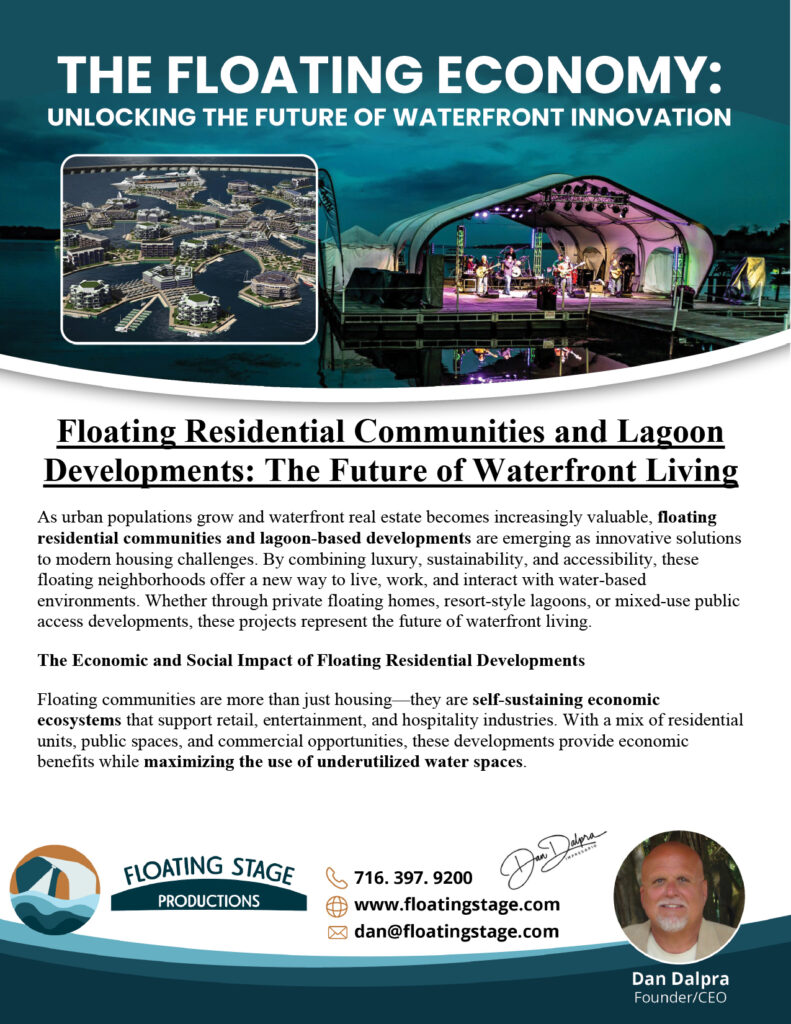
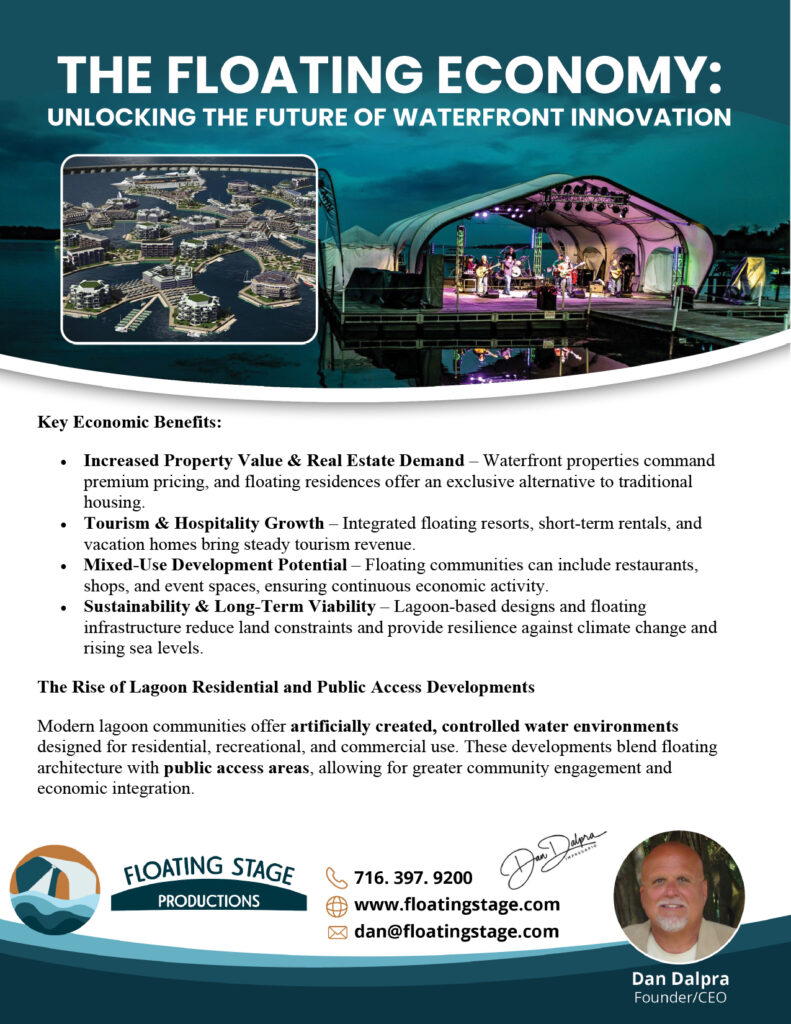
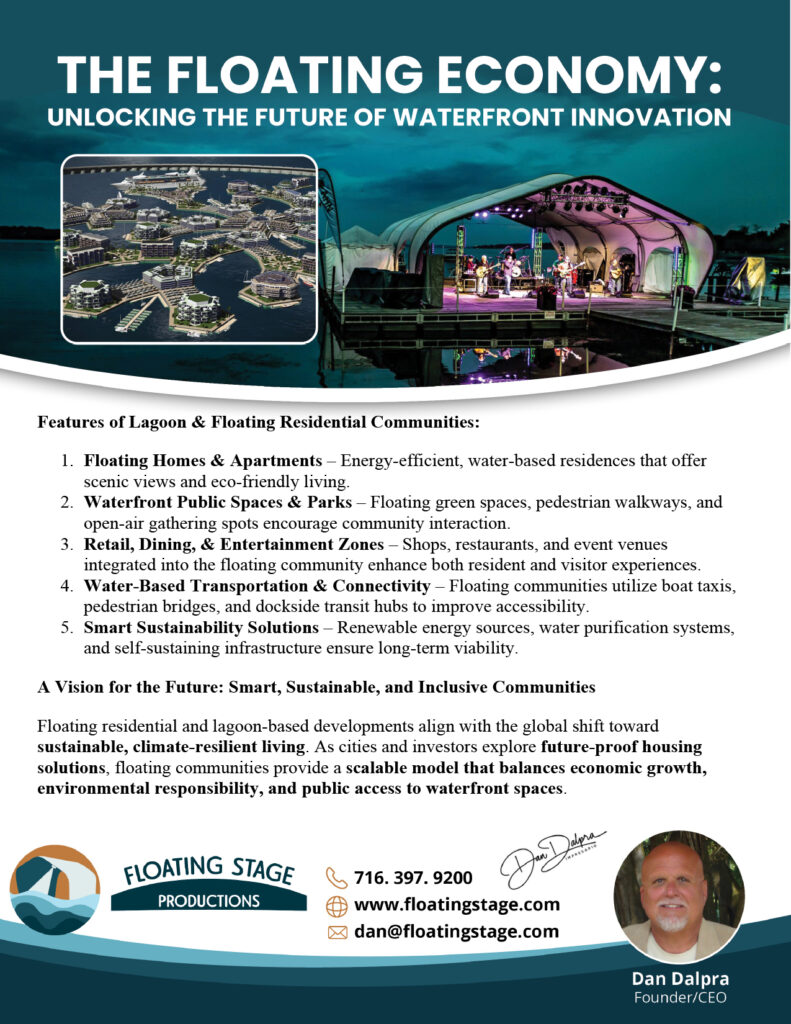
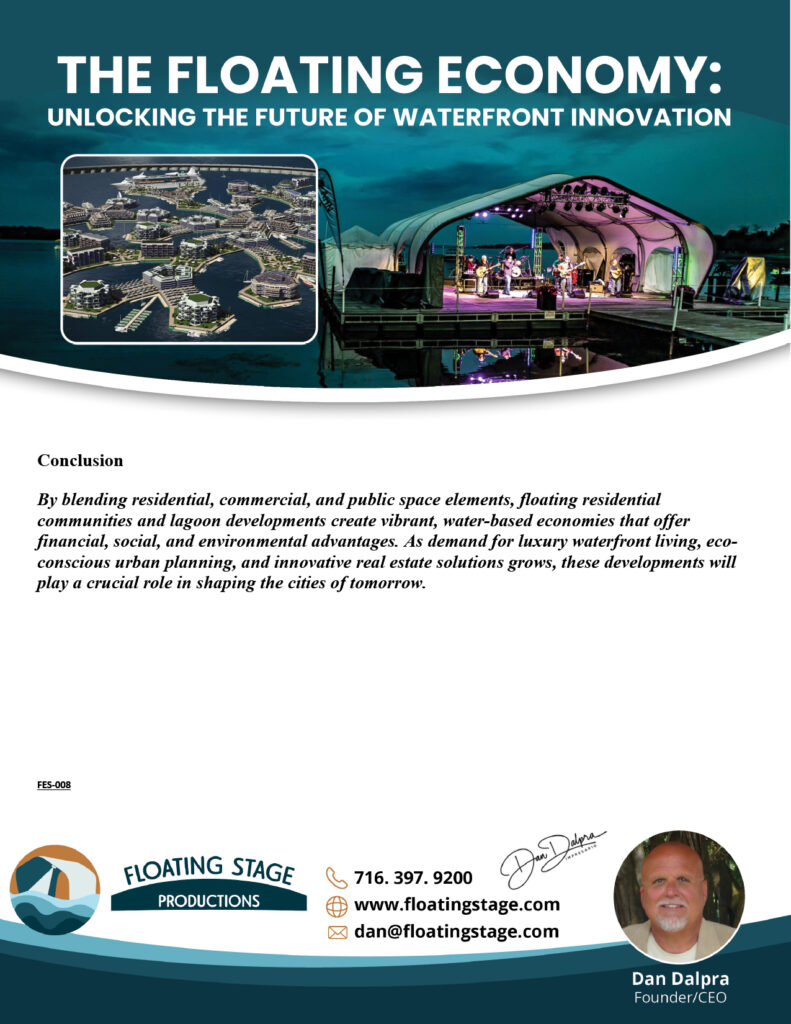
As cities and waterfront destinations seek to maximize their economic and cultural potential, floating entertainment districts are emerging as a bold new concept. These water-based hubs combine live music, dining, nightlife, and immersive attractions to create an unparalleled social experience. By blending innovation, tourism, and sustainability, floating entertainment districts have the power to transform waterfronts into thriving economic engines.
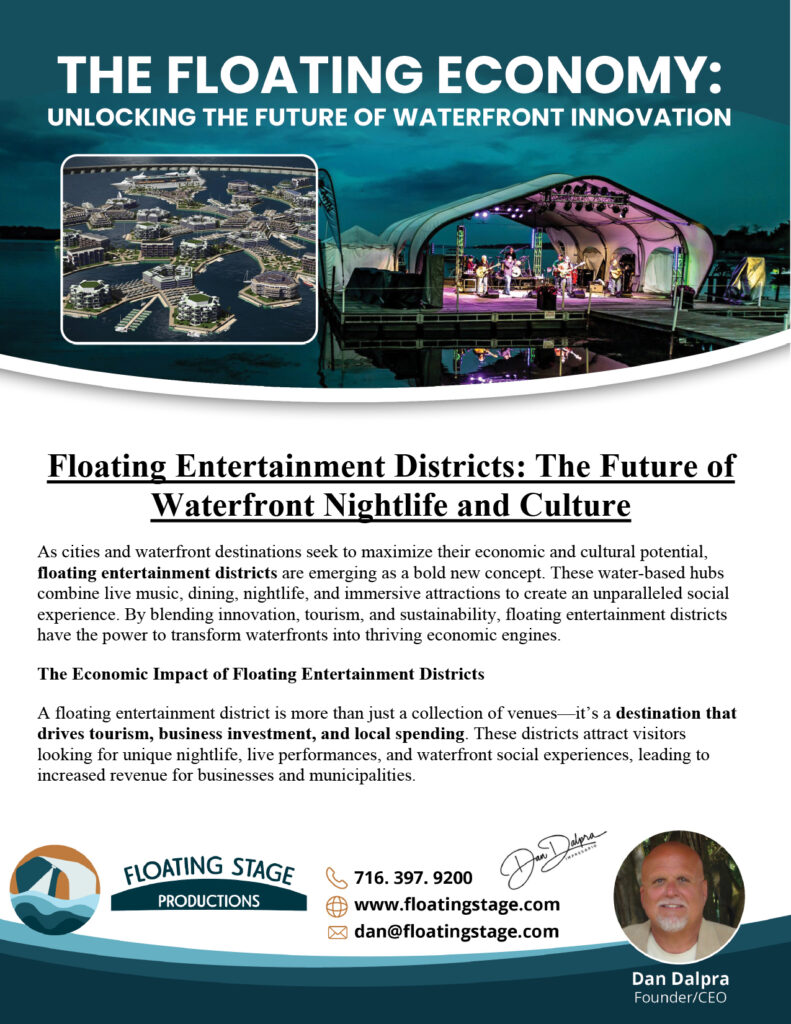
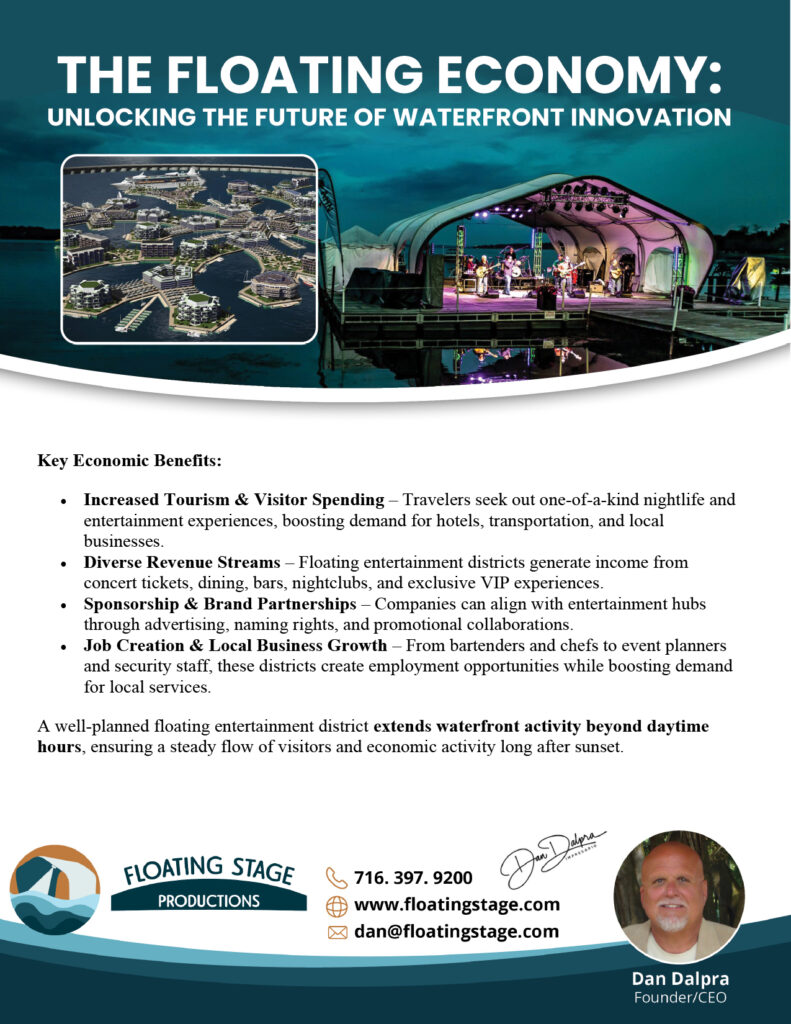
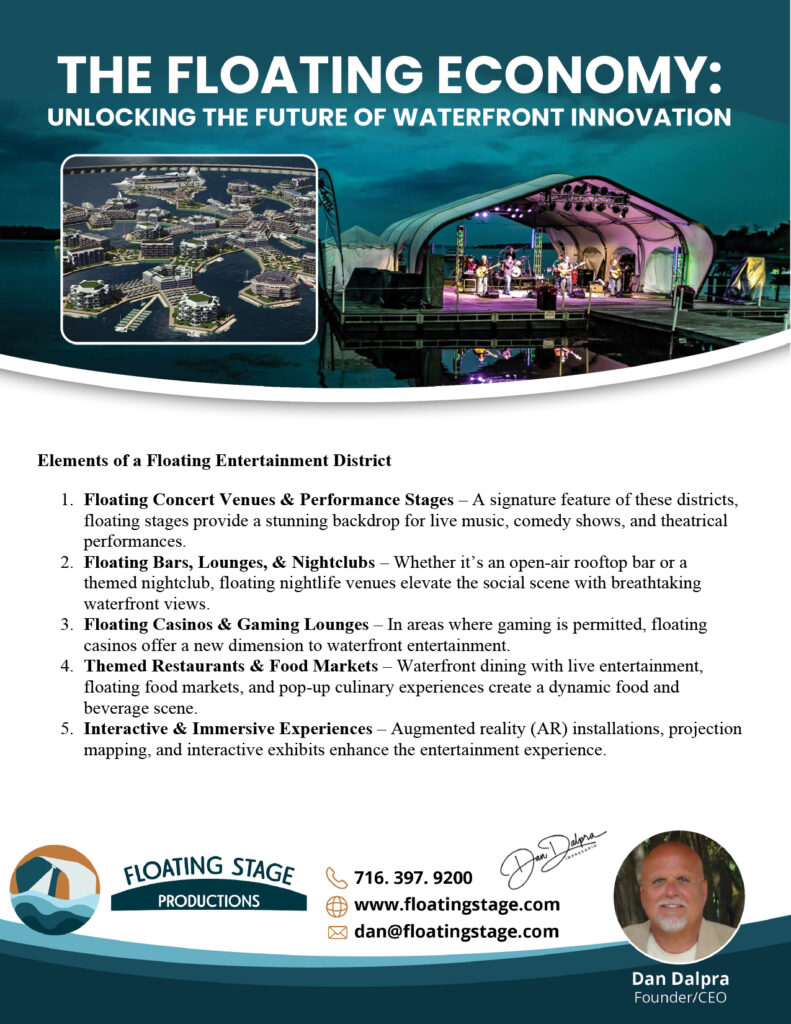
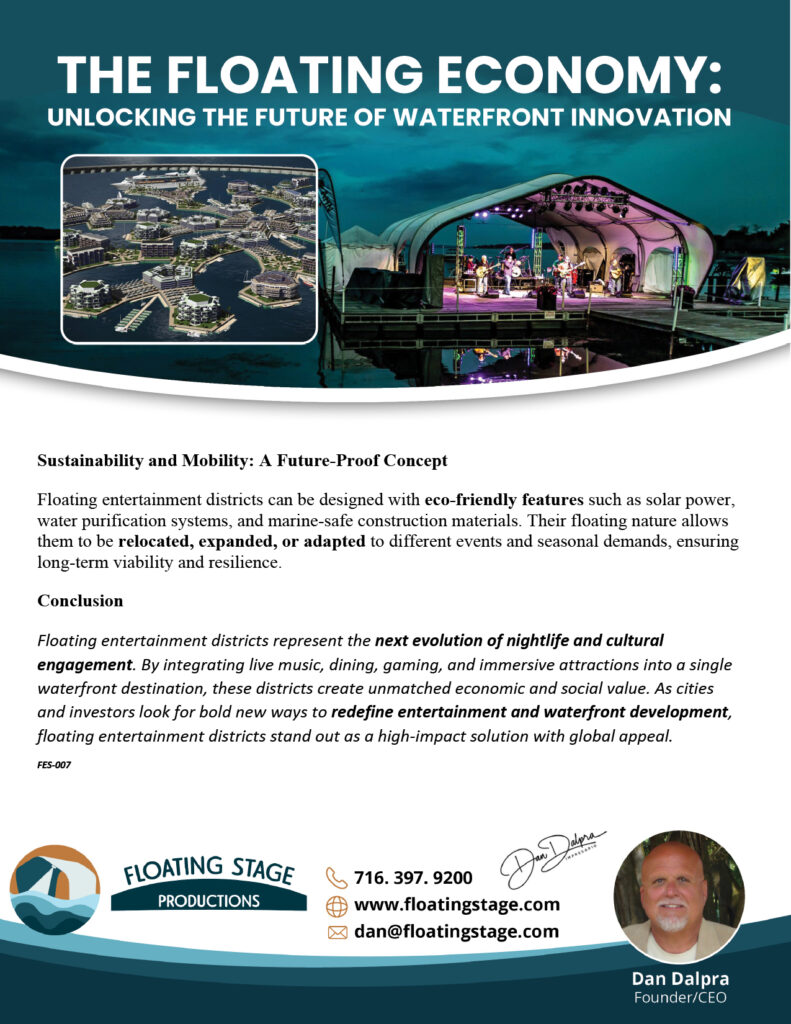
As cities and businesses seek innovative ways to maximize their waterfront assets, floating sports and recreation hubs are emerging as game-changing solutions. These versatile platforms create dynamic spaces for fitness, leisure, and competitive sports, attracting both locals and tourists. By integrating recreation into the floating economy, these hubs generate economic benefits, enhance community engagement, and promote a healthy lifestyle.
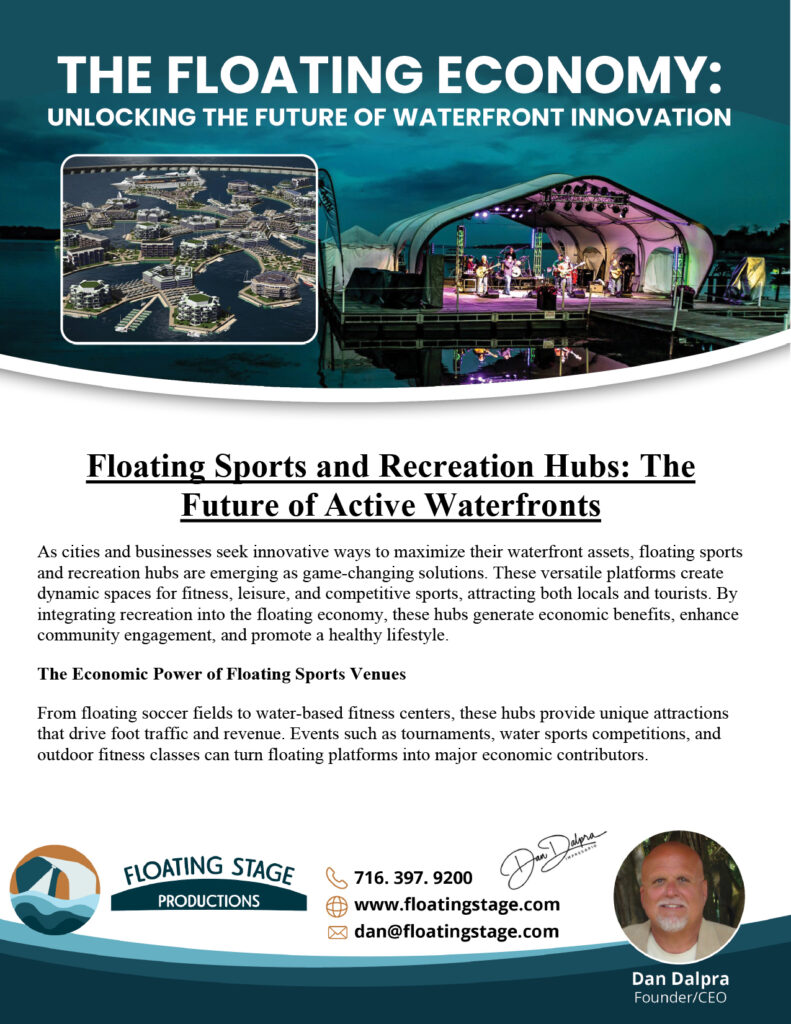
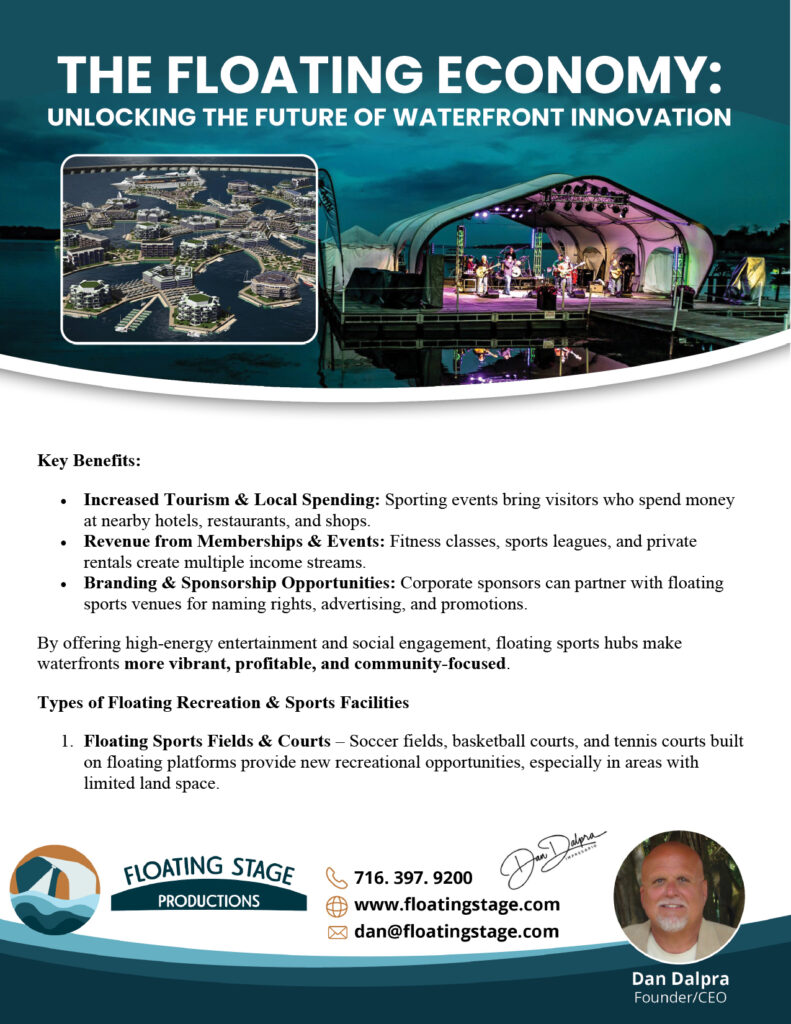
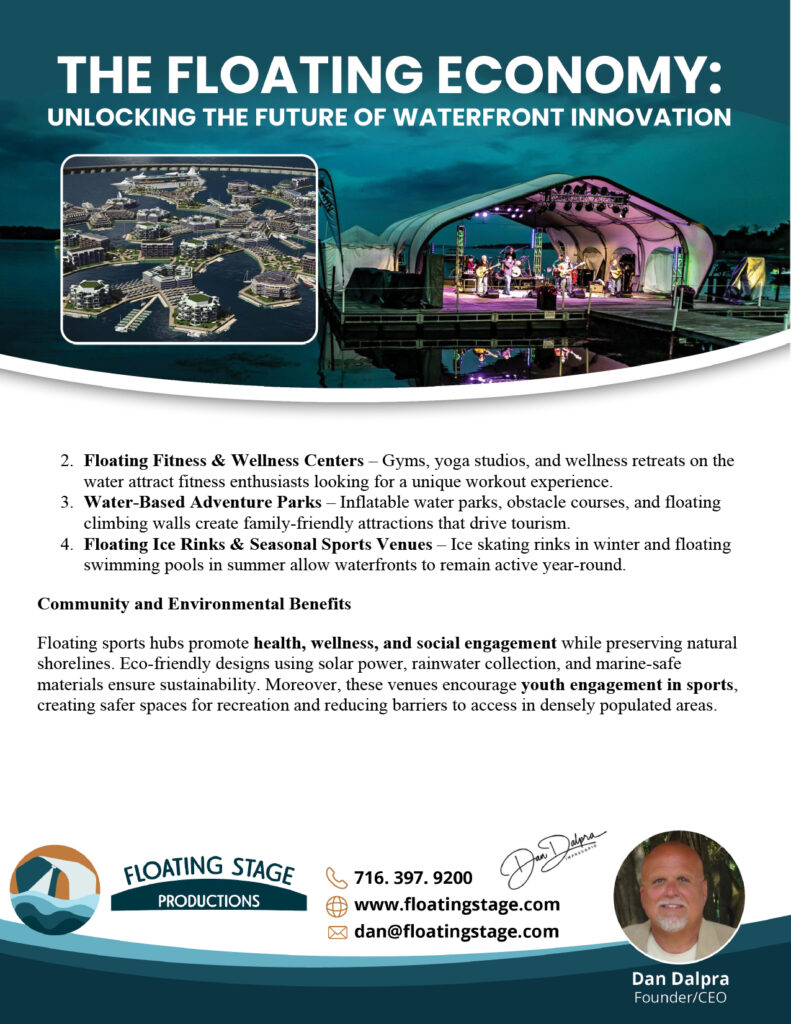
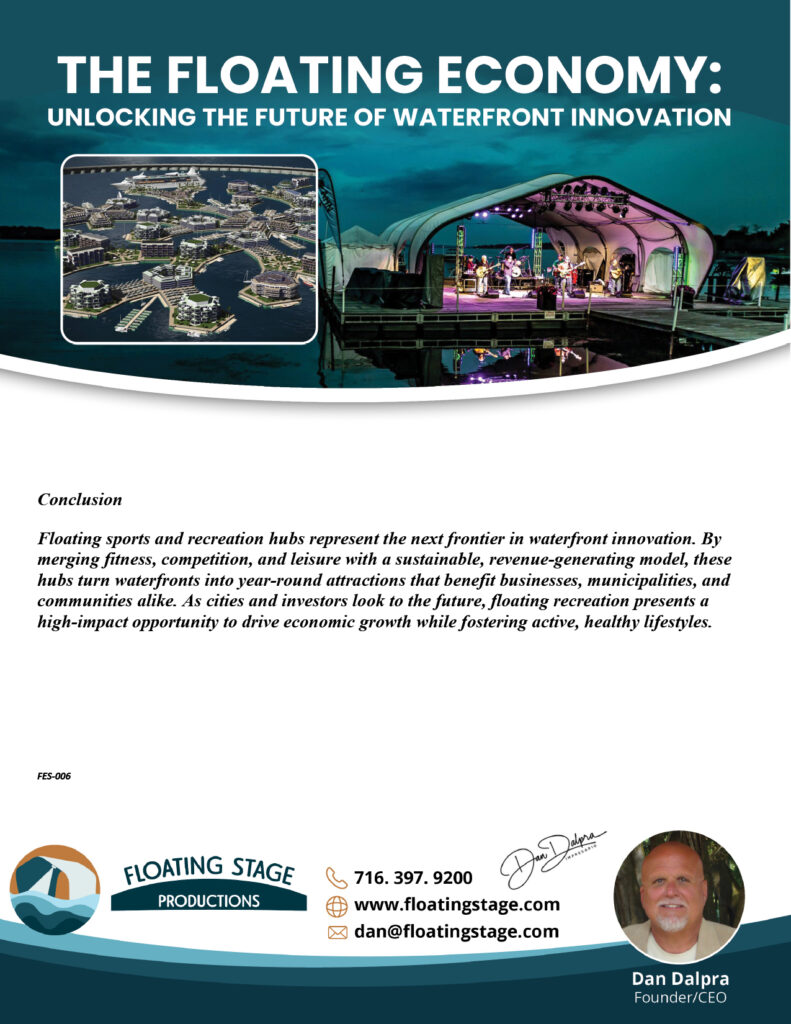
As the demand for experiential commerce and leisure grows, floating retail spaces and resorts are redefining the possibilities of waterfront development. These floating concepts provide consumers with unique shopping and hospitality experiences, while simultaneously creating economic opportunities for businesses and municipalities. By combining mobility, sustainability, and exclusivity, floating retail and resorts are transforming waterfronts into thriving economic engines.

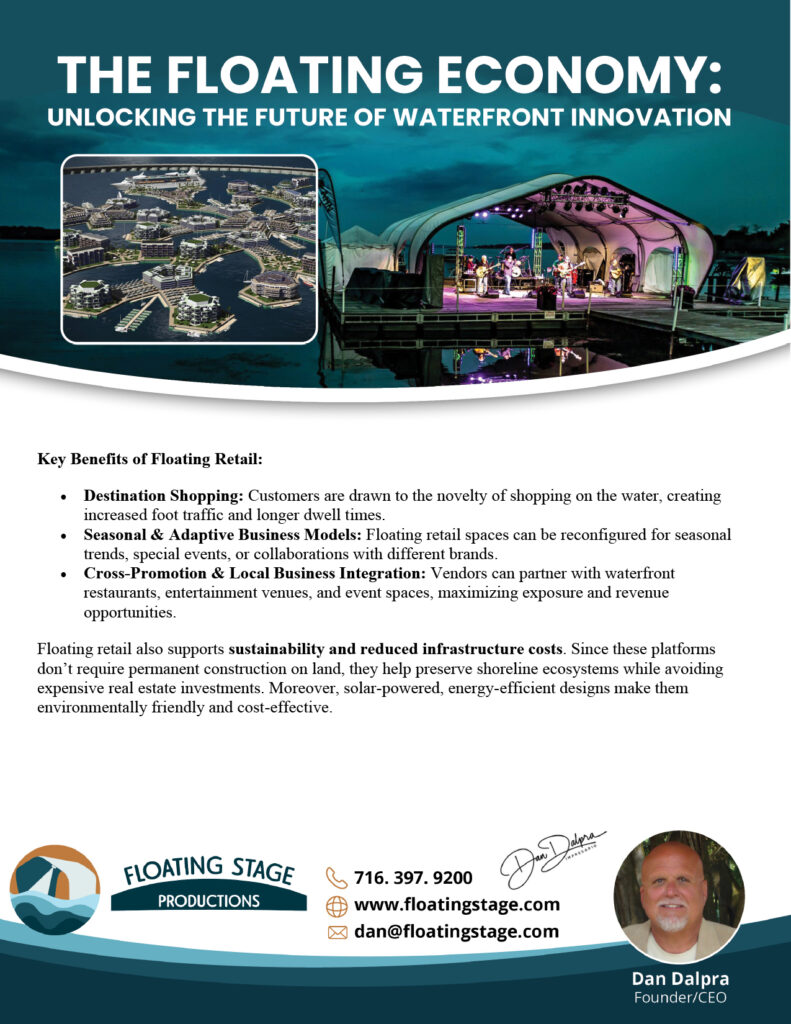
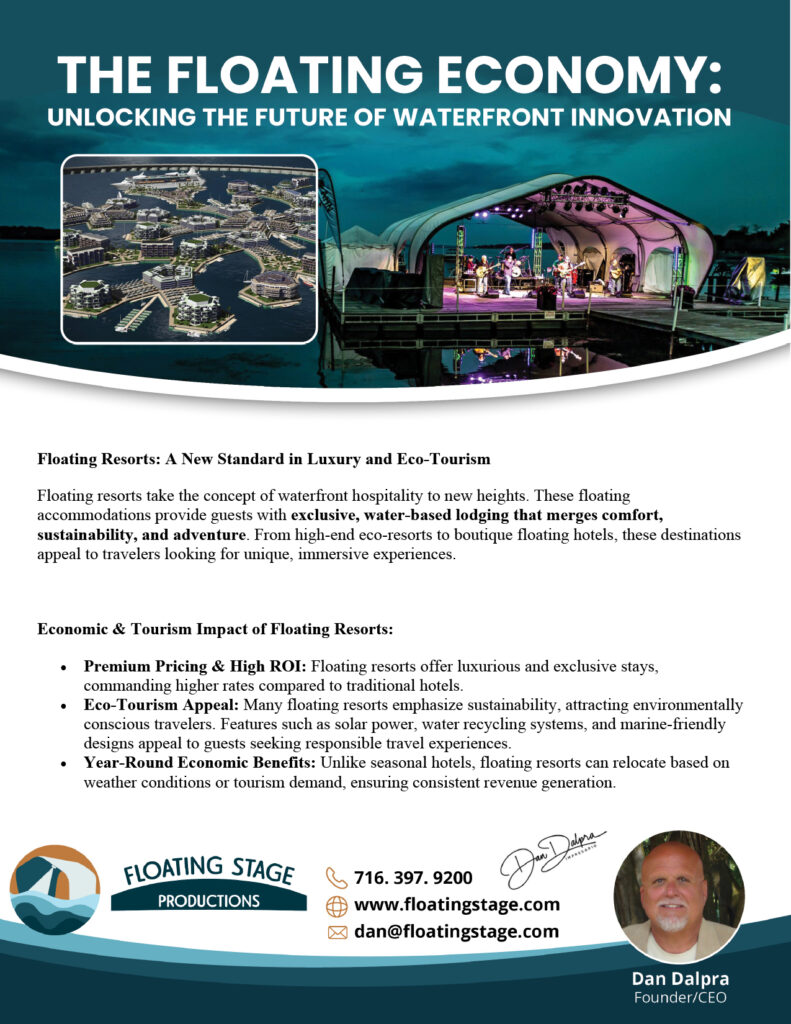
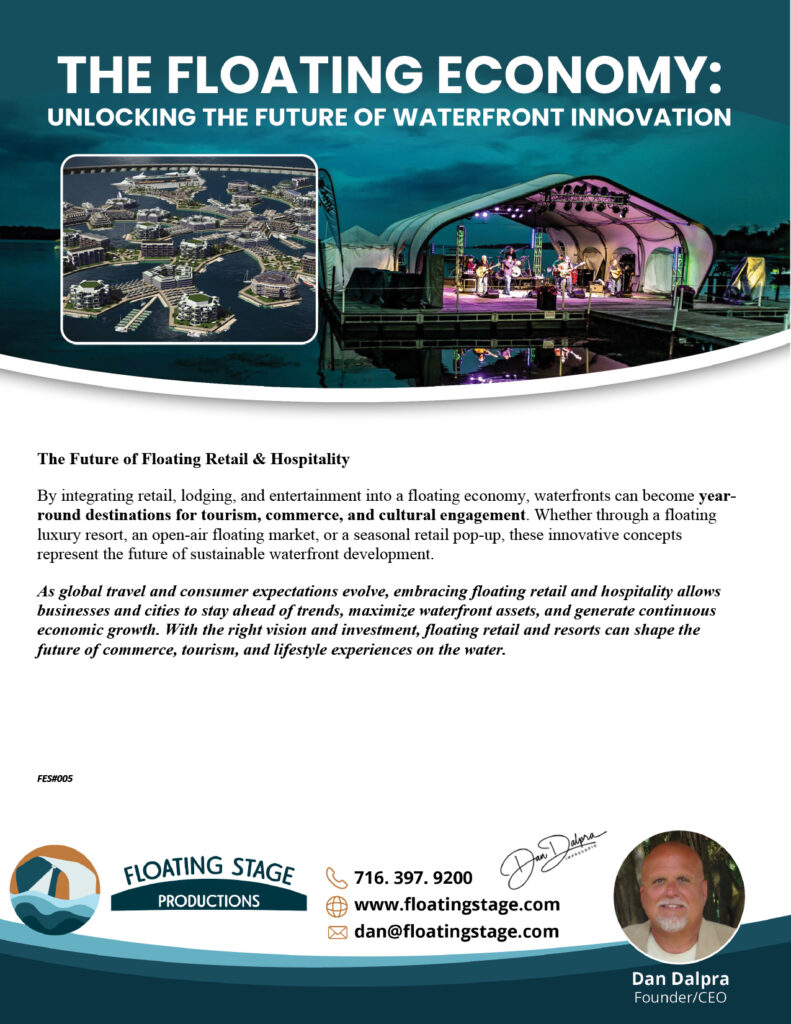
As waterfronts continue to evolve into vibrant social and economic hubs, floating microbreweries and public gathering spaces are emerging as game-changing innovations. These floating venues combine the booming craft beer industry with the appeal of open-air social environments, creating a unique destination that fosters community engagement, tourism, and economic growth.
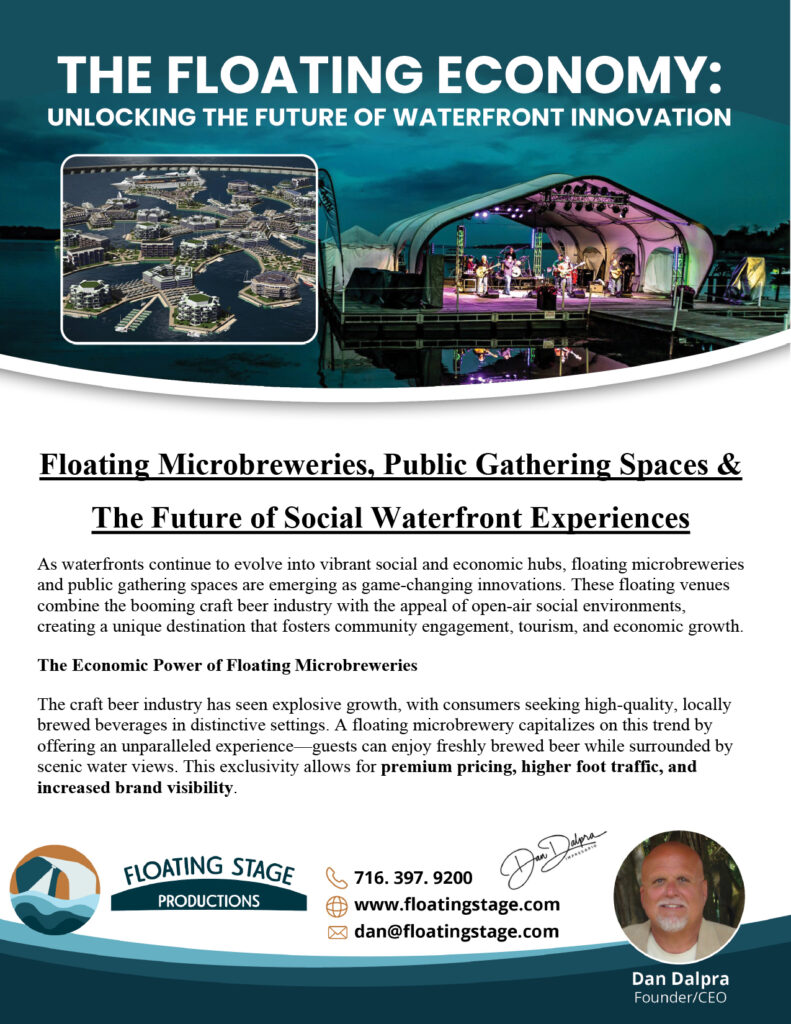
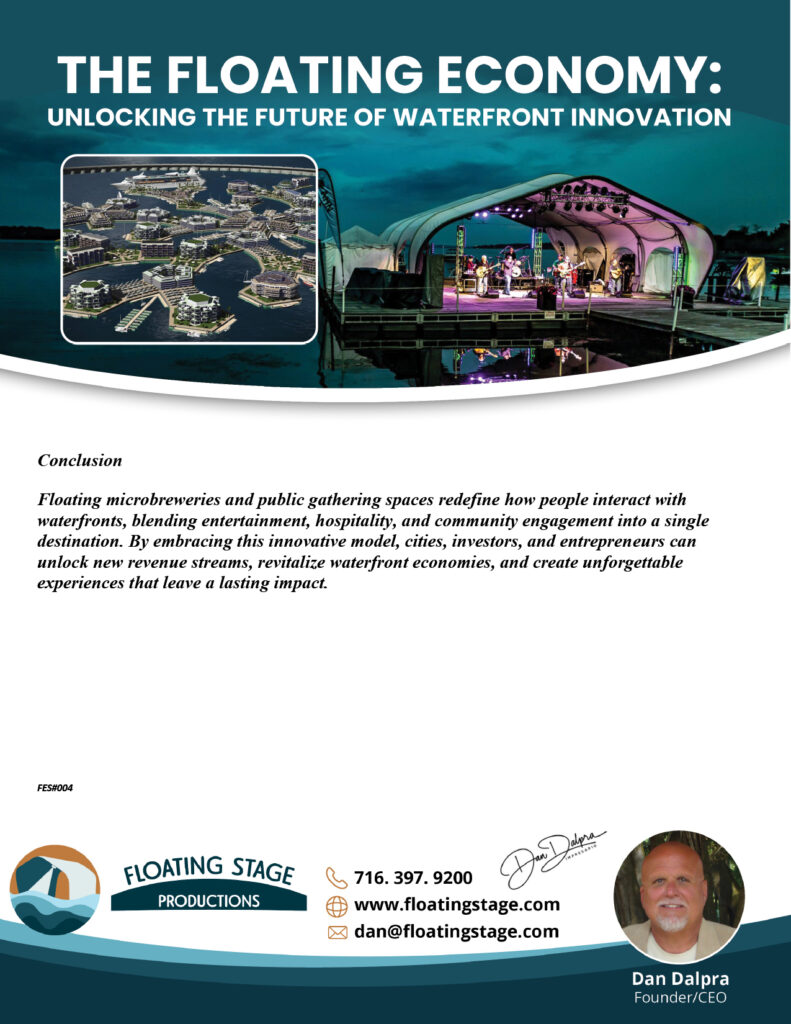

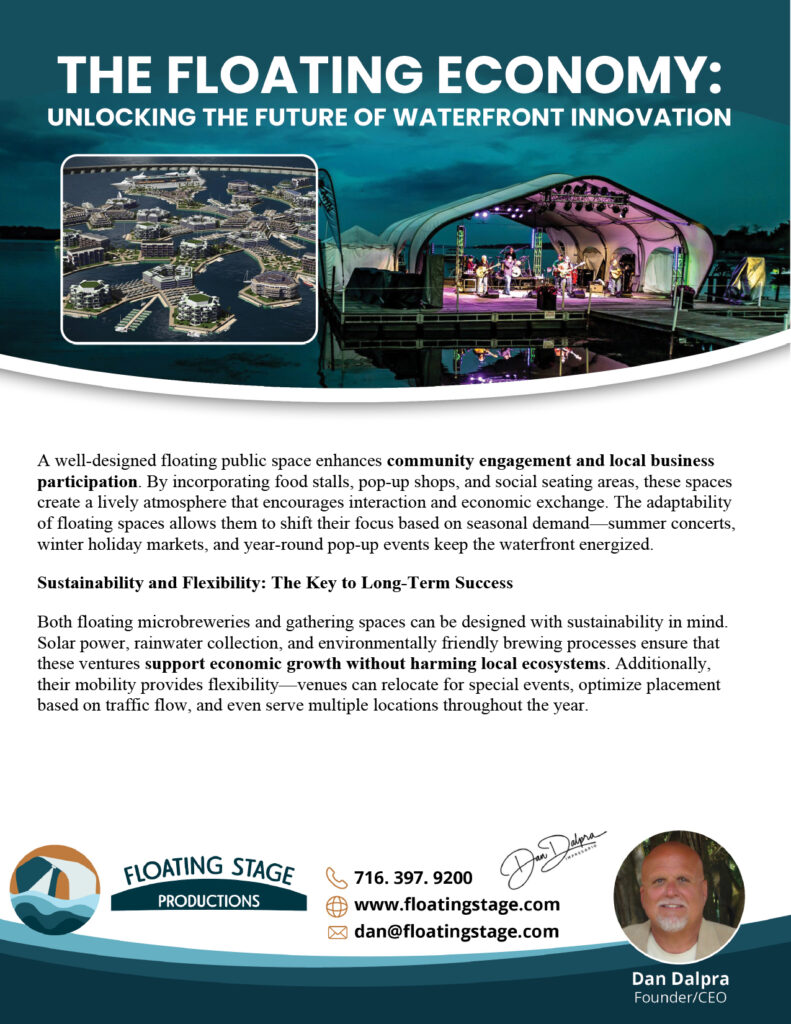

The fusion of hospitality and waterfront innovation has given rise to a new economic powerhouse: floating restaurants, bars, and event spaces. These unique venues capitalize on scenic water views, exclusive experiences, and high consumer demand for destination dining. A floating hospitality model doesn’t just attract guests—it transforms waterfronts into dynamic economic centers, benefiting businesses, municipalities, and local communities.
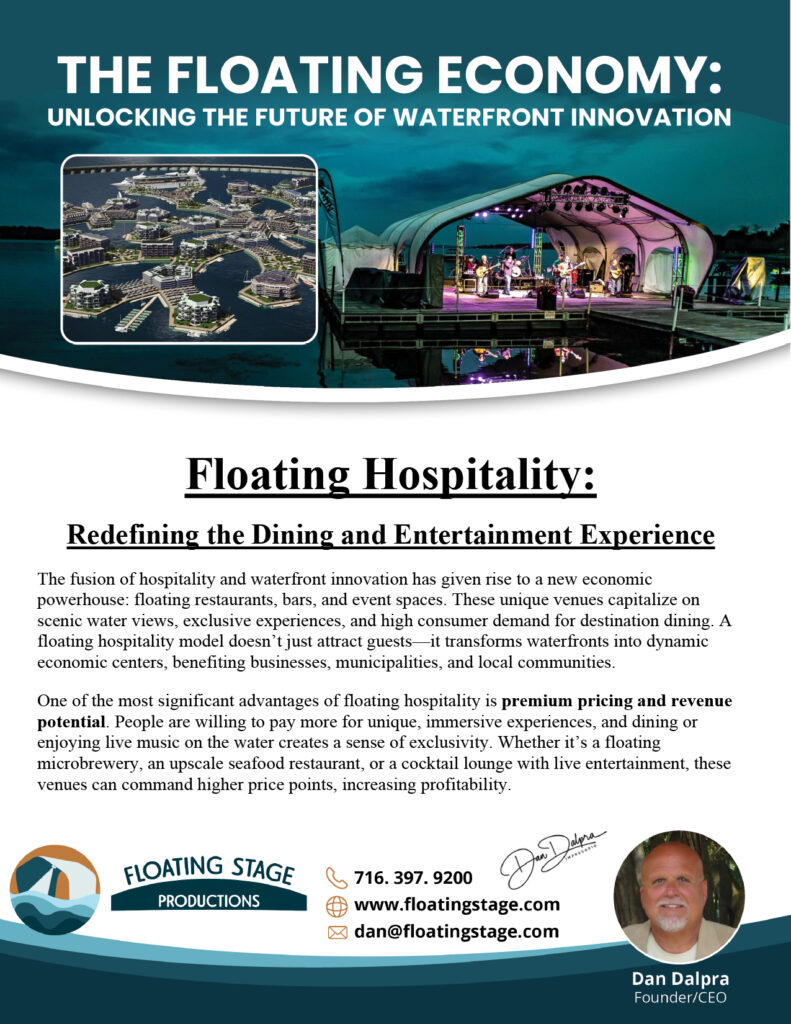
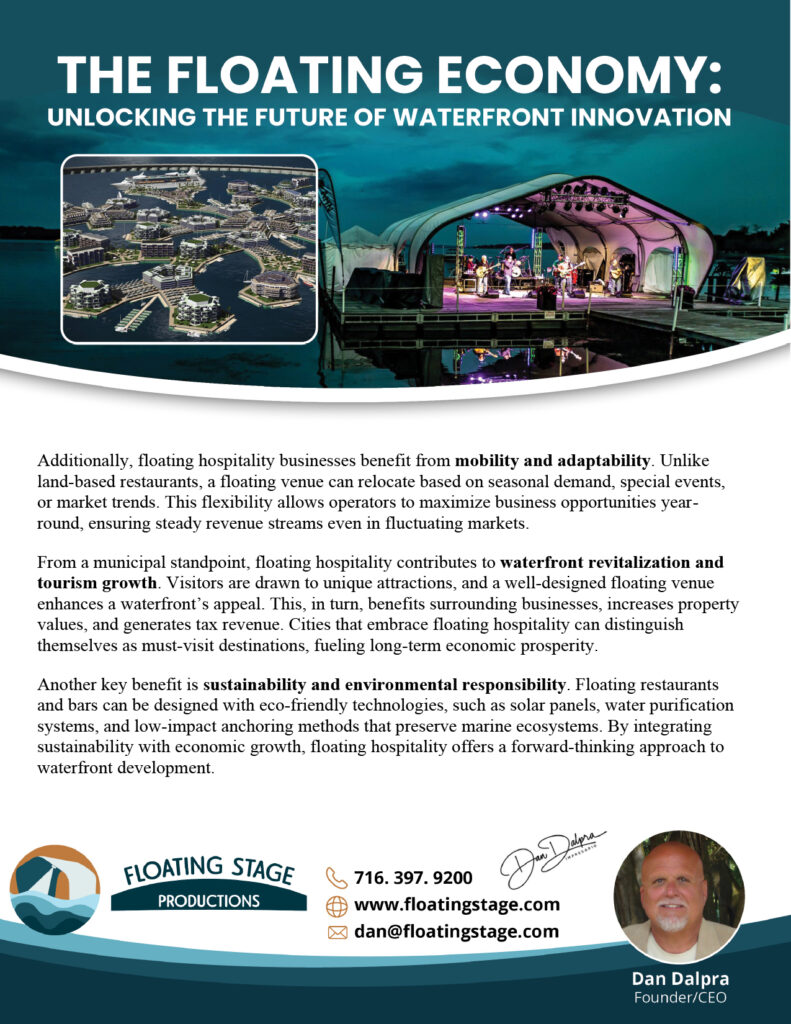
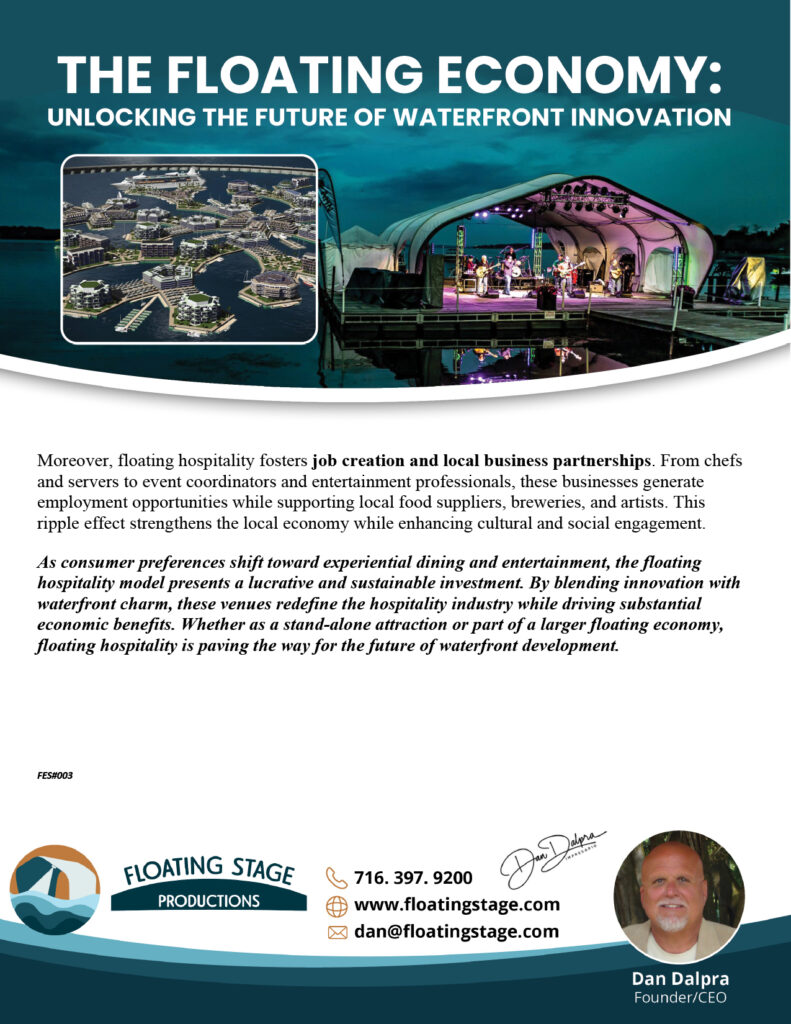
A floating stage is more than just a unique entertainment venue—it is a powerful economic engine that transforms waterfronts into thriving hubs of activity. By bringing live music, performances, and cultural events directly to the water, a floating stage attracts large audiences, generates substantial revenue, and revitalizes local economies.
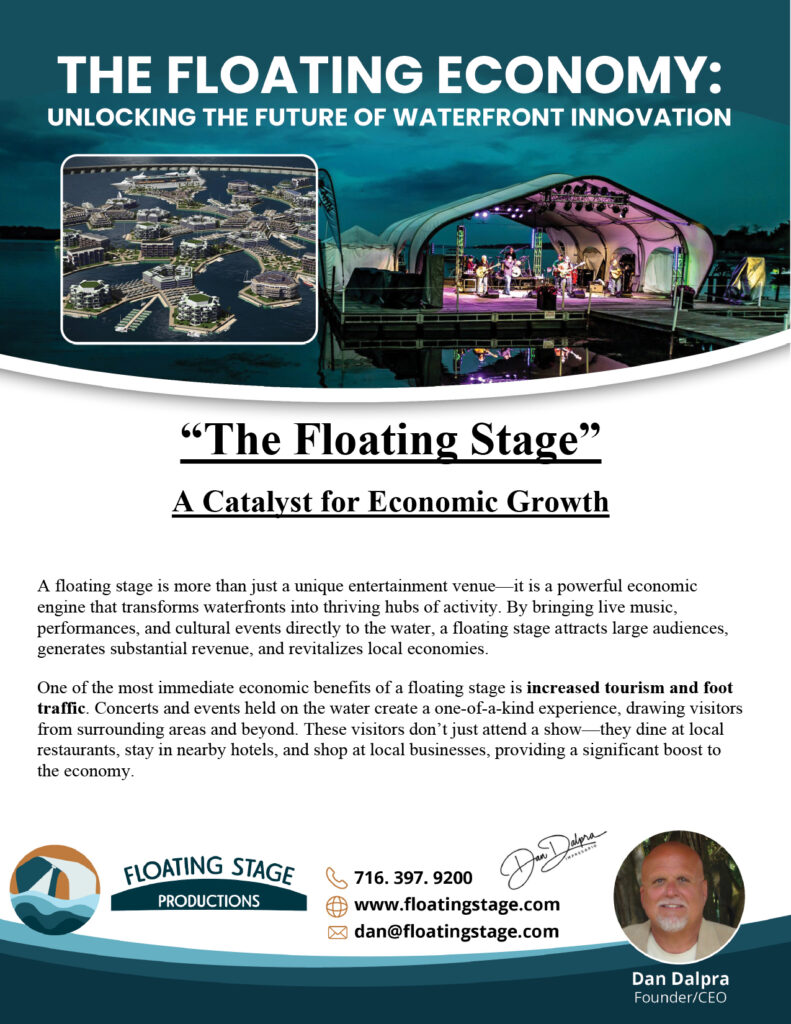


A floating economy represents a revolutionary shift in how businesses, entertainment, and tourism interact with
waterfront spaces. By leveraging water-based infrastructure, such as floating stages, restaurants, marketplaces,
and entertainment hubs, communities can unlock significant economic, social, and environmental benefits. This
model is especially relevant in regions with underutilized waterfronts, where land-based development may be
limited or costly.
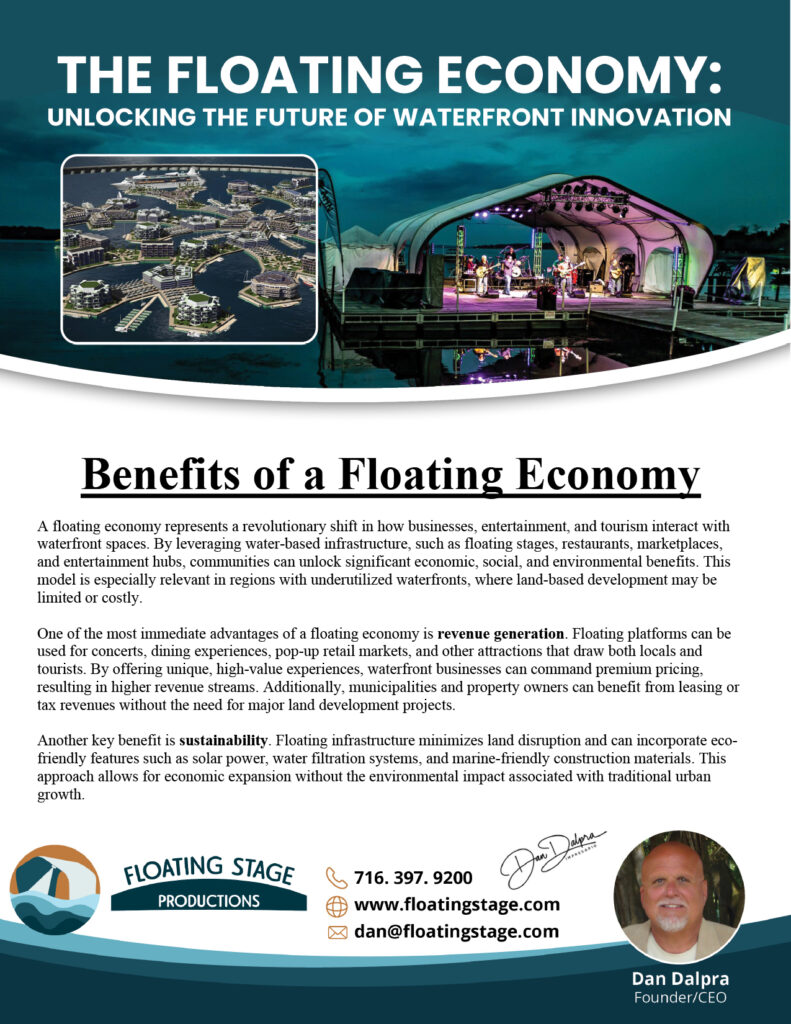

The floating economy, encompassing floating structures such as stages, platforms, hotels, restaurants, and even entire communities on water, is rapidly gaining traction. As coastal cities and waterfronts explore innovative ways to maximize space, adapt to climate change, and boost economic activity, floating developments offer unique and sustainable solutions. The future of the floating economy is not only promising but transformative, poised to reshape the hospitality, entertainment, and living sectors in unprecedented ways.
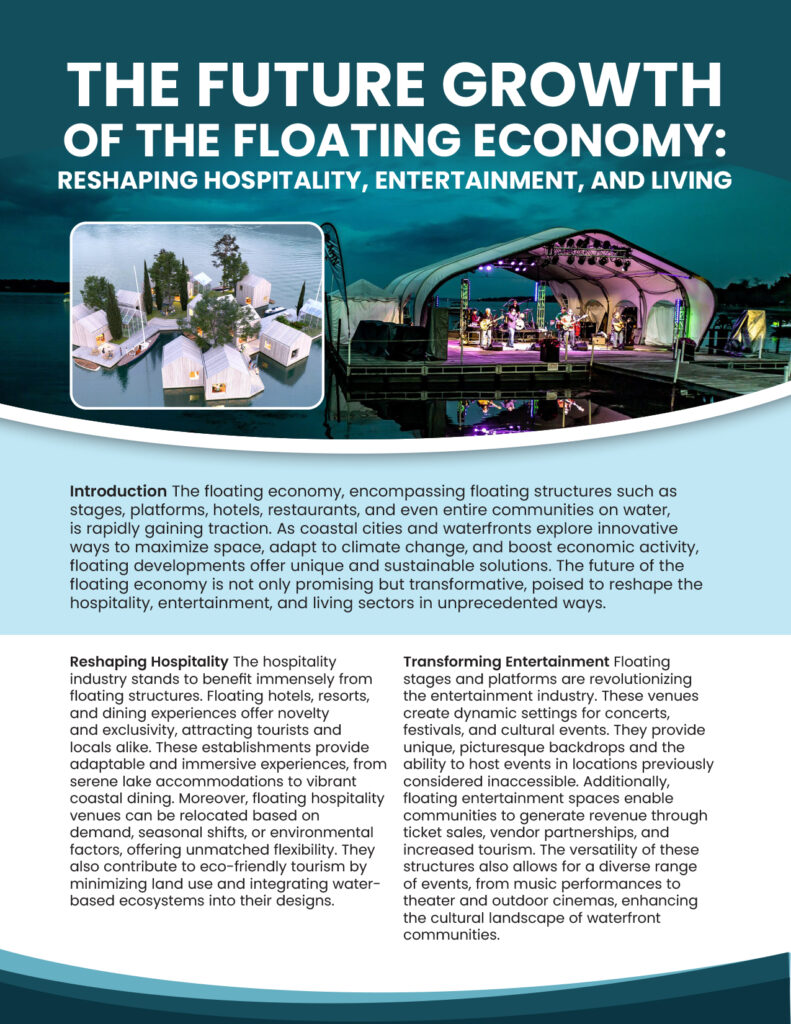

By Pat Locke

